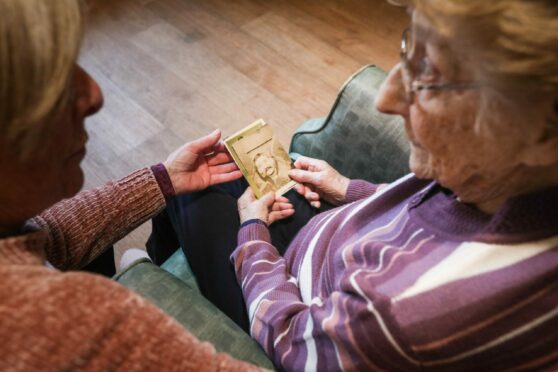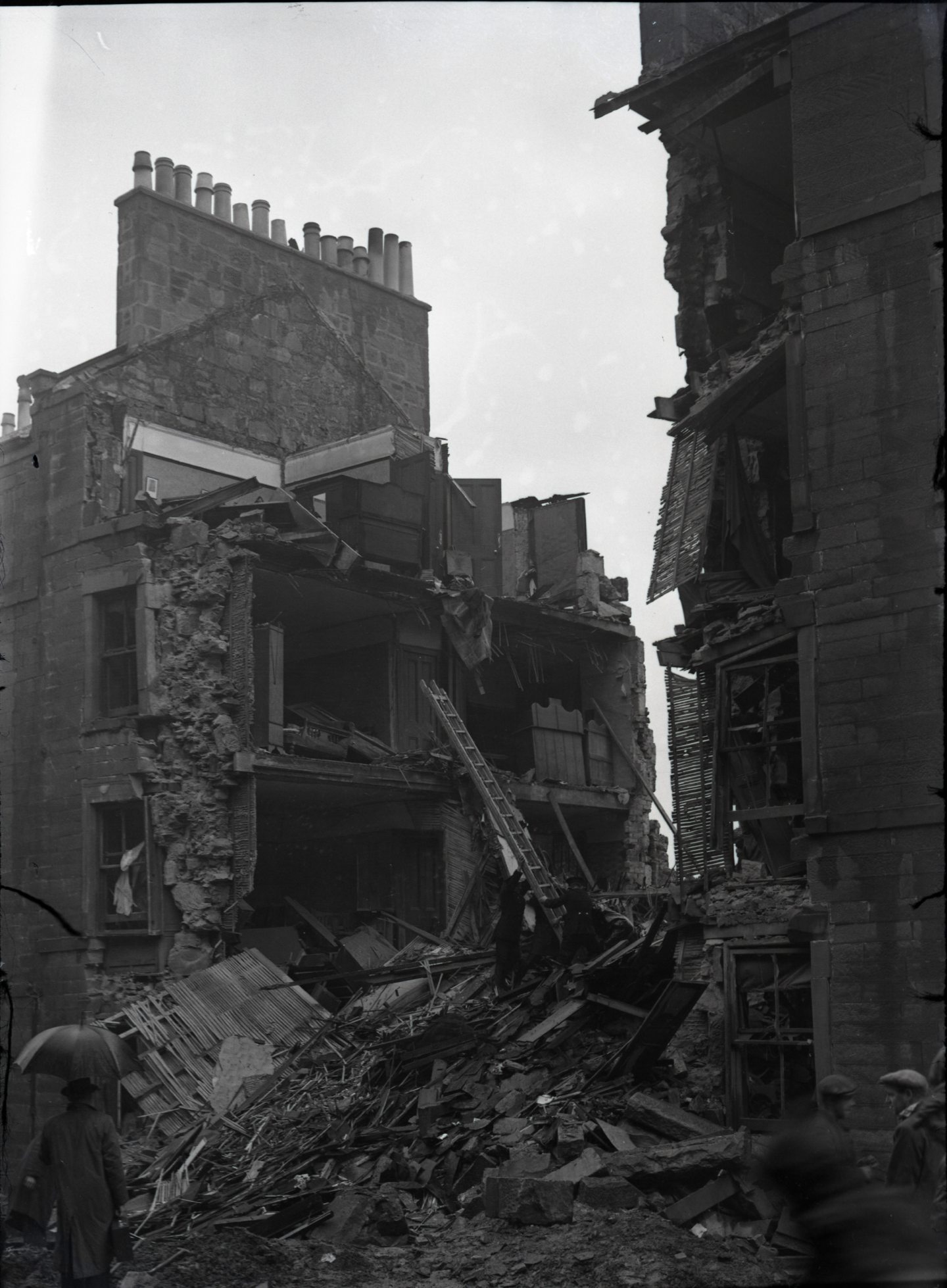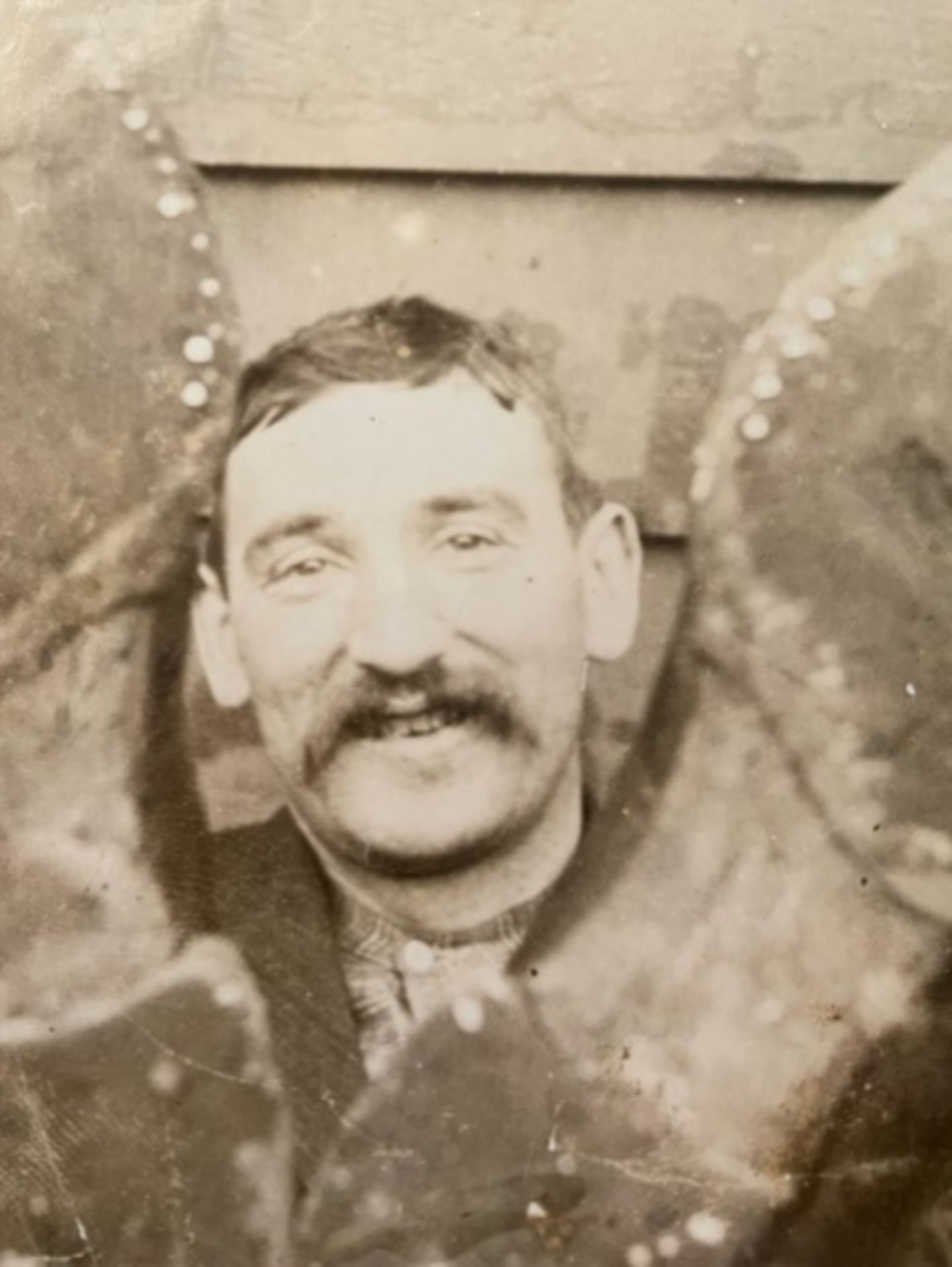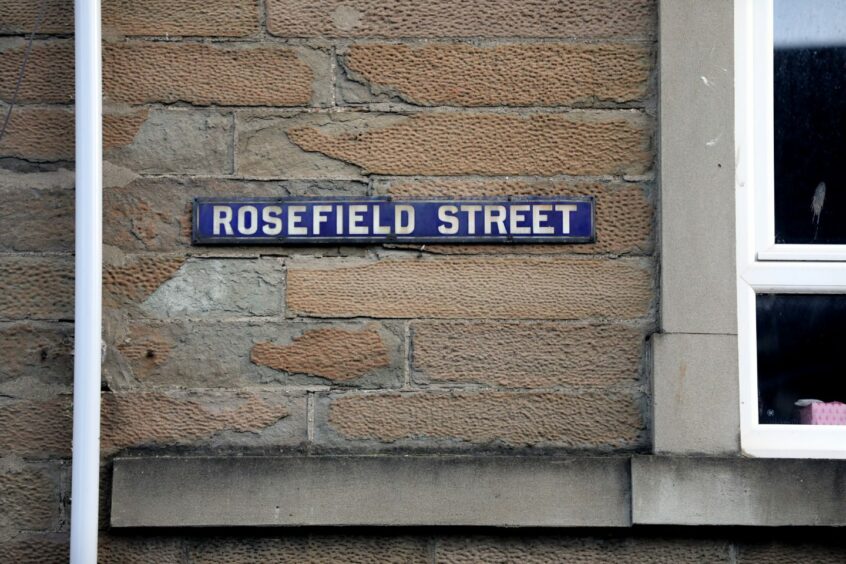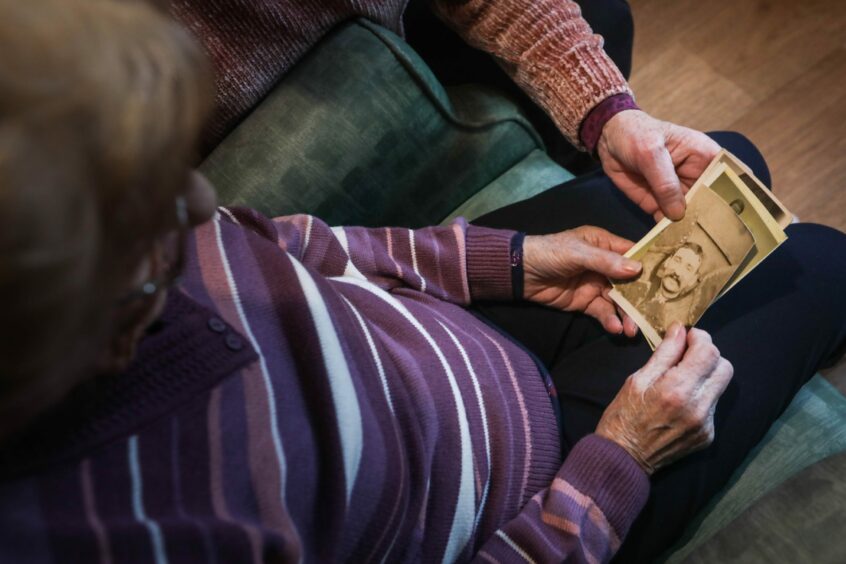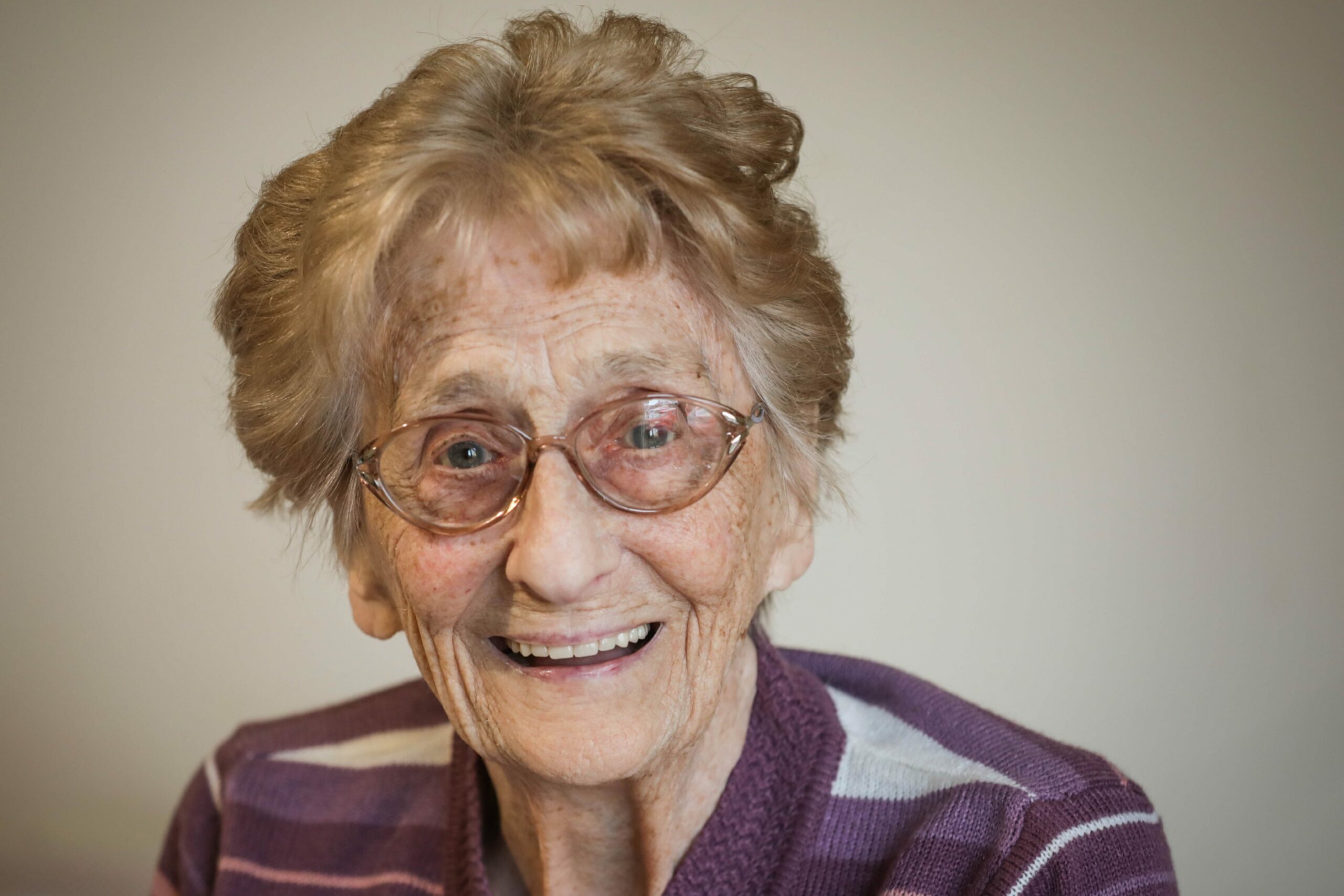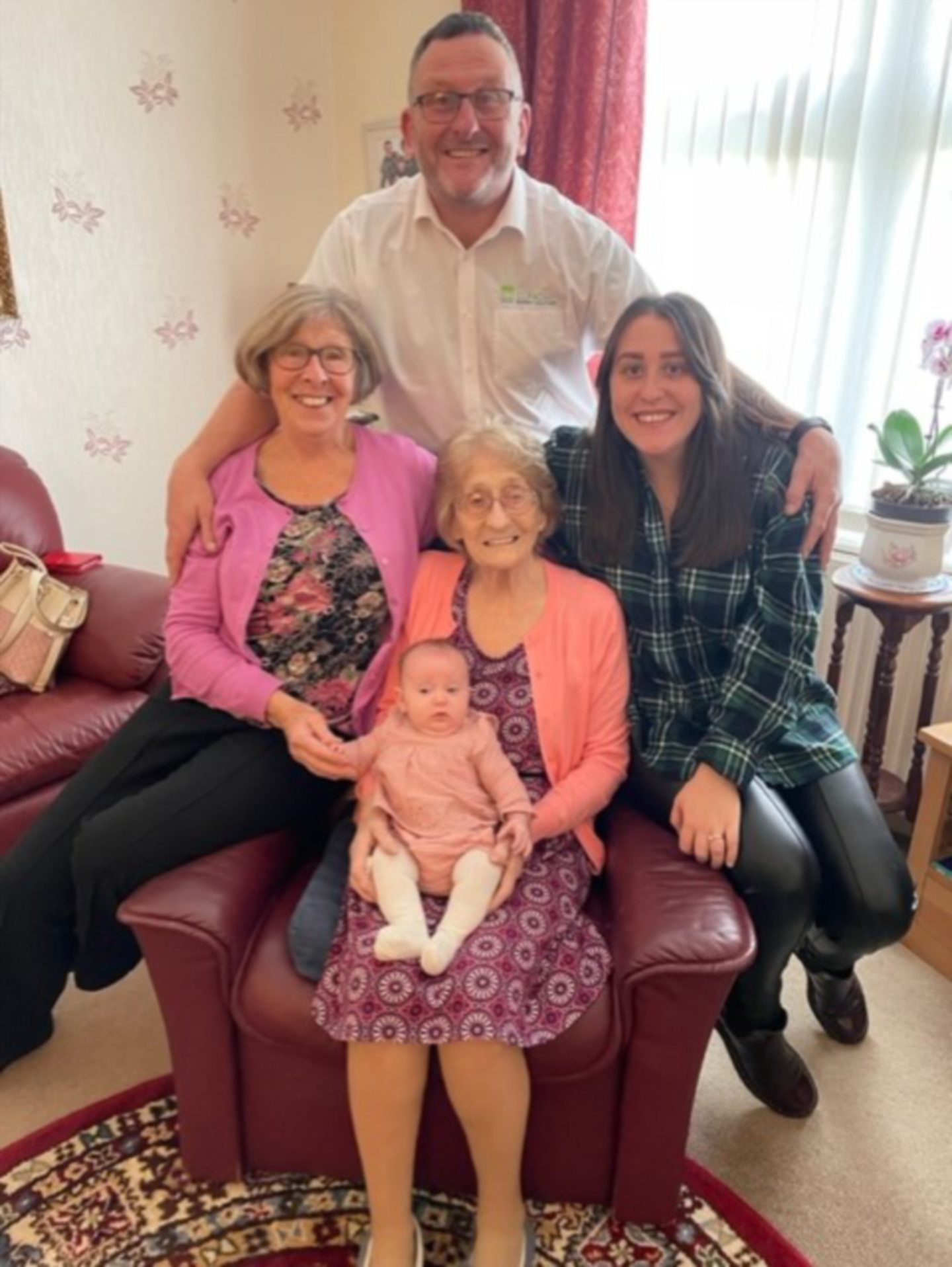Robert Coventry was killed instantly the night bombs fell on Dundee.
A four-storey tenement in Rosefield Street was destroyed in what seemed to be a random attack by a German raider on Bonfire Night in 1940.
Robert, known as Bob, was still reading the paper when tragedy struck.
Bob had been lodging with the Watson family on the first floor, at number 17.
After he failed to turn up to work the following morning, his family put out the search call and endured a nerve-wracking wait before his body was found.
His granddaughter, Irene McLaughlin, now 93, tells us more.
The Rosefield Street bombing
Rosefield Street was one in a series of German attacks on Dundee, including a bombing at the Taybank Works air-raid shelter.
While nobody was killed at the Taybank Works, the residents at Rosefield Street weren’t so lucky.
Several families had been sharing apartments in the Rosefield Street tenement.
For some, there were as many as six to a room.
The bomb dropped through the roof of the tenement during the night and devastated the flats.
It only exploded when it reached the bottom floor.
It was at this point that the air raid sirens went off.
Twelve people were trapped by the blast but were eventually recovered by the emergency services.
Those who survived lost most of their belongings, and many left with only the clothes on their backs.
In later reports of the event, only two people were believed to have been killed.
Among them was Mary Ann Laing, who was 64.
She was killed by an iron range falling through from the floor above.
However, there were a significant number of unanswered questions after the explosion, including what had happened to several missing people including Bob.
Robert Coventry
Bob came from the Coaltown of Wemyss and lived there until the early 1920s.
He worked as a coal miner in the Michael Colliery.
Born in 1874, he moved to Dundee after he left the pits for an easier life and took up residence working as a doorman at one of the city’s dance halls.
Irene remembers: “That was when they had proper doormen, you know?
“He had a real smart uniform and everything!”
The Courier reported on November 7 1940 that Bob Coventry’s family had reported him missing on November 6 when he failed to show up for work that morning.
It was discovered that he had been missing since the day before.
The report on his disappearance was significant because most bombings were reported on only in the vaguest of terms to hide their exact locations from the enemy.
The Courier stated: “It is now feared there is another victim from the blast.
“Coventry was in one of the houses before the bomb struck, and it is now feared that he is buried underneath the extensive wreckage.
“Up to last night, however, no body had been found.”
The search continued over the next couple of days.
Demolition squads searched day and night for the Fifer amid the wreckage of the building.
On November 7, a body was found.
It was removed to the infirmary for identification.
On November 8, The Courier confirmed that it was Bob.
Irene adds: “When they found him, he was trapped under the cooker.
“When they lifted it off of him, he was sitting in a chair with a copy of The Courier on his lap.
“He would’ve been in his 60s at the time.”
After the Rosefield Street bombing, around 24 families were left homeless.
The fact Dundee didn’t suffer further damage was a surprise given its prime position on the Tay would have made it a prime target for enemy bombers.
However, the preferred local myth was that Hitler’s granny had come from Dundee and the German leader had a personal soft spot for the city.
Bob’s death was also reported on by the Leven Mail, his old local paper, who described him as “a well-known local man survived by his wife and family”.
It read: “Word has been reached that a former Coaltown of Wemyss resident has been killed in an air raid on an East of Scotland town.
“Victim was Mr Robert Coventry who left Coaltown 20 years ago.
“Previous to leaving this district (the) deceased was employed as a miner at Michael Colliery and is well known locally.
“He was 66 years of age and is survived by his wife and family.”
The Rosefield Street tenements were eventually rebuilt.
Irene was only in her early teens when her grandfather passed away.
She said: “I think I would’ve been around 13 or 14.
“I’d lived in Dundee my whole life at that point.
“I was born on Michael Street.”
Irene later moved to a small village in Angus where she gave birth to seven children – six daughters and one boy.
Her eldest daughter passed away 10 years ago from MND.
Irene moved back to Dundee in the early ’70s and worked in Wright’s Dental Factory until she retired in 1981.
She now lives in a care home in Carnoustie and is a very happy great-great-grandmother.
She said: “I became a great-great-granny four months ago.
“We’ve got a lovely picture of the five generations of us.
“There’s me, my daughter Irene, her son, his daughter, and now her new baby.
“It’s absolutely amazing to see.”
Irene’s stories of Bob and what happened at Rosefield Street back in 1940 will continue to be passed down the generations to ensure his legacy lives on.
